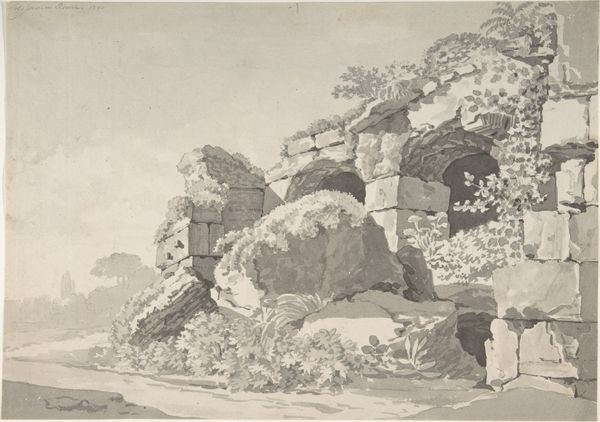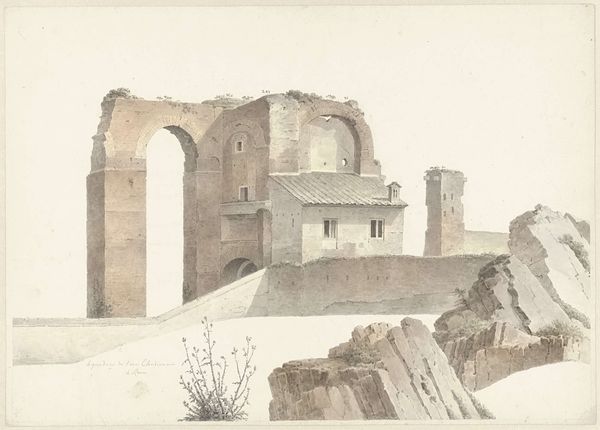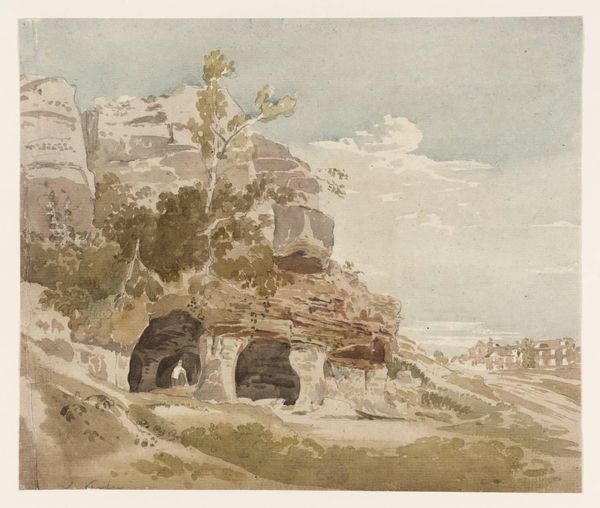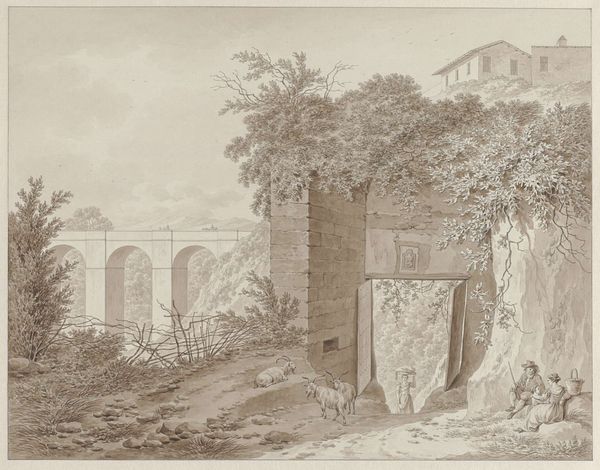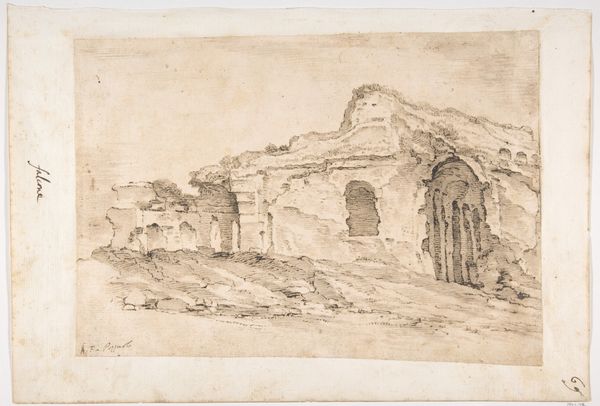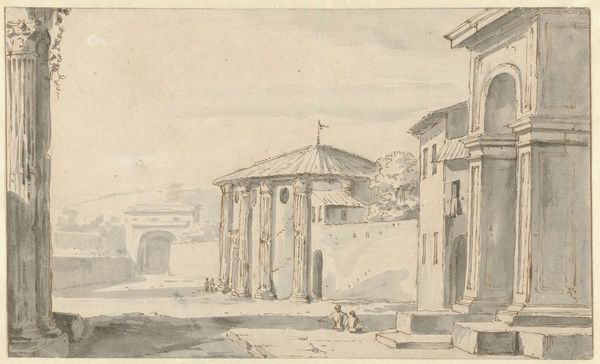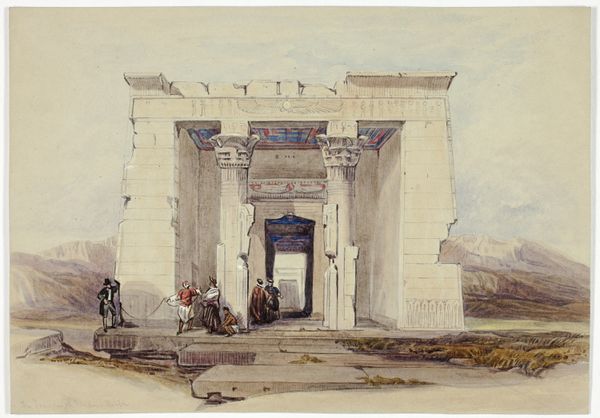
Graven met gevel in Dorische stijl in rots gehouwen in omgeving van Syracuse 1778
0:00
0:00
#
pencil drawn
#
landscape illustration sketch
#
amateur sketch
#
light pencil work
#
pencil sketch
#
incomplete sketchy
#
charcoal drawing
#
pencil drawing
#
watercolour illustration
#
watercolor
Dimensions: height 231 mm, width 380 mm
Copyright: Rijks Museum: Open Domain
Louis Ducros made this watercolor of tombs in Syracuse, Italy, during the late 18th century. It captures the prevailing fashion for Neoclassicism, a style that dominated European art as people looked to the ancient world for inspiration. The tombs, carved directly into the rock face, reflect an era when the remains of antiquity were first being methodically recorded and preserved. The Doric style facade, despite its weathered state, speaks to the enduring influence of classical architecture, not just as a set of aesthetic principles, but as a cultural touchstone signifying order and civic virtue. Ducros’s rendering of the site reminds us of the complex relationship between landscape, architecture, and the passage of time. To fully appreciate artworks like this, we must consider their social context. Historical records, architectural studies, and travel literature offer valuable insight into how artists like Ducros contributed to a broader understanding of cultural heritage. Art is contingent on its social and institutional setting.
Comments
No comments
Be the first to comment and join the conversation on the ultimate creative platform.

